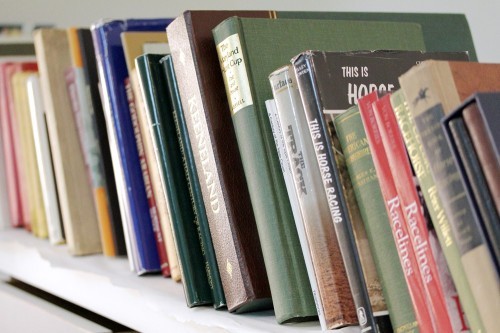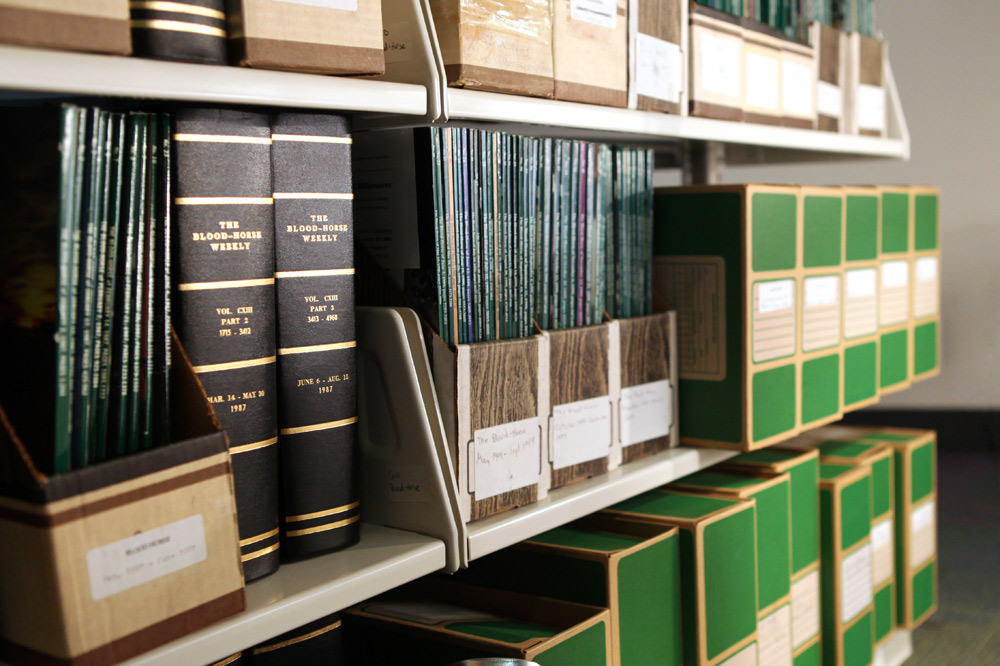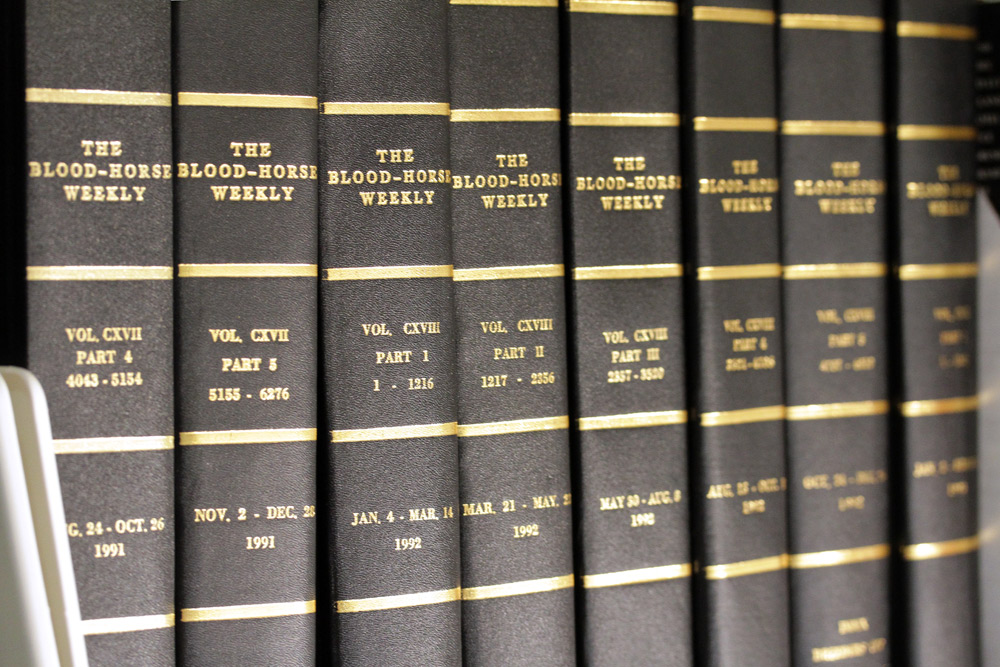On What a Curator Does: Helping You Find Your Story

As curator of collections at the Kentucky Derby Museum, it seems I’m often asked the question “What does a curator do?” The answer to that is not an easy one. Many people seem to see my position as the de facto historian of the museum. That’s a component, but there are numerous members of the KDM team who have accumulated vast historical knowledge due to the nature of their jobs, or because they know the industry and love the game! That’s good for you, our visitor, as it ensures you’ll get a quality experience at the Derby Museum.
I see my role more as that of the shepherd, helping historians, writers, filmmakers and all members of the public find the tools to tell their stories. This definitely comes through in efforts to process and make accessible the museum’s vast archival and library collection. Over the past two years, the collections team has worked diligently to implement two projects that will make these stories available to a much wider audience.
The first of these projects is an online search engine that can be accessed through our website, www.derbymuseum.org. As an aside, I want to touch on some objects that you can view on this site, such as the wonderful pieces we have from the collection of legendary jockey Bill Shoemaker. Many books could be published and many films could be made about the life and times of “The Shoe”. Of the artifacts you can currently view on the site, one of my personal favorites is Shoemaker’s 1947 high school yearbook. Inside, you can see Shoe’s school portrait, where he’s barely smiling. As a jockey, he was often known for his smile after investing some of his winnings in dental care. There’s also a photo of him with his wrestling team, as Shoe was a great wrestler and boxer in his high school days. When I look at this yearbook, I wonder what Shoe’s classmates thought of him. Even though he was already skipping school to work at a nearby ranch, could any of them have known the small kid on the wrestling team would become one of the world’s greatest jockeys?
Currently, the majority of records available through the search engine deal with our archival holdings. The first collection is that of Jim Bolus, long-time journalist and racing historian. Consisting of thousands of research files and audio interviews, this collection covers the Kentucky Derby and the Thoroughbred industry from 1875-1995 and is a great source for primary and secondary research. I never got the opportunity to meet Jim as he passed away in 1997. However, I’ve spent a lot of time with this collection and can tell you that Jim had a curator’s mentality. He kept multiple copies of everything. I’ve also learned that jockey Earl Sande, three-time Kentucky Derby winning jockey and Triple Crown winner in 1930 aboard Gallant Fox, was a person Jim was passionate about. He has thousands of documents relating to and numerous interviews about Sande. The stories that lie just in this one segment of the vast collection are astounding to consider.
This leads us to our second project, an expanded research space in which to use the museum’s library and archival collections. This spring, the museum officially opened the Colonel Clark Library, made possible with generous assistance from the Gheens Foundation, Inc. Within this space, researchers can access our library books, stallion catalogs and annual statistical reviews and our complete magazine and periodical holdings, which include a strong collection of The Blood-Horse and the Thoroughbred Times. With the assistance of collections staff, researchers can access items housed in archives storage, such as the previously mentioned Bolus collection. The Colonel Clark Library is open Tuesdays during normal operating hours and other days by appointment only. The library can be accessed free of charge.
Making history, or all stories for that matter, more readily available is a big part of being curator of collections at the Kentucky Derby Museum. It might not get the byline of the historian, author or journalist or the film credit of the documentary filmmaker, but hopefully it makes their jobs easier and more rewarding. I hope you’ll visit us online or at the Colonel Clark Library, so we can help you find the voice for your story. It’s what we do.




